How to grow a perennial herbaceous cinquefoil on a site: features of planting and care
Among gardeners, herbaceous perennial Potentilla has gained great popularity for decorating flower beds. A plant that is not capricious in planting and unpretentious in care, with bright small flowers, with spreading stems and leaves resembling strawberry - even a novice gardener can grow this beauty.
A little about the plant
Herbaceous perennial Potentilla is hybrids, up to 800 mm high and with a scattering of bright colors, up to 50 mm in diameter. For crossing, 3 plant species of the same genus Potentilla (Potentilla) were used:
- nepalensis - Nepalese
- agrophylla - silvery-leaved plant
- atrosanguinea - flowers of this species are painted in dark red colors.
Advice! Frame groups of daylilies, daisies or bells with cinquefoil - such a neighborhood will make your flower garden very attractive. Potentilla looks good on an alpine slide and in a rock garden.
Before planting, you need to take care of the preparation of the planting material. Let's examine this issue in more detail.
Reproduction methods
Cinquefoil is equally successful in settling in four ways:
- seeds;
- root cuttings;
- layering;
- division.
Seeds. To grow by this method, you will need to grow seedlings and only then move them into open ground:
- A thin layer of expanded clay drainage is poured onto the bottom of the tank, then 2/3 are filled with soil, which is purchased ready-made or mixed from equal parts of humus and peat.
- The soil is moistened from the sprayer, seeds are planted in it at a certain distance and covered with peat or sifted soil.
- Next, you need to wrap the boxes in a covering material and install in a well-lit, warm place.
When the sprouts hatch, the film should be removed and the seedlings should be grown. The first feeding with complex fertilizer is carried out after the first leaf, the second - with two real leaves. After that, the seedlings are ready to move into open ground.
Root cuttings. For resettlement in this way, you will need to prepare cuttings:
- Foliage and flowers are removed from the selected last year's shoots, planting material is cut off, up to 100 mm long.
- In July-August, cuttings are planted in a school: at a slight angle, they are placed in loose watered soil and covered with a plastic bottle with a cut off neck.
- Now it remains to remove the shoots and ovaries of flowers from the cuttings before winter, ensuring the development of the root system.
Watering and loosening is carried out as soon as necessary. In winter, the sprouts are additionally covered with roofing paper or other covering material. In the spring, when the heat is stable, ready-made rooted plants can be planted in place.
Layers. This is the easiest way to propagate a plant:
- In the spring, a strong shoot is selected and a shallow incision is made on the outside.
- A shallow trench is dug into the ground.
- The sprout is cleared of foliage and flowers and buried in the furrow. Sometimes you have to fix the layering with a peg.
Now it remains to water and care for the layering according to the basic scheme. Several bushes will emerge from the ground, which will be ready for transplanting in the fall, for which the layering is divided into several bushes.
Important! 3-4 weeks before the separation of the layer, it is necessary to dig up the place of the cut, the layer from the main bush and cut it off completely. The plant ceases to receive nutrition from the mother bush and develops its root system.
Division of the bush. For resettlement by this method, an old Potentilla bush is selected:
- In spring or autumn, the land under the mother plant is abundantly flooded with water.
- Then the bush is carefully dug out of the ground.
- Now you need to rinse the root system with warm water and divide the bush with a sharp knife so that each part contains at least 3 strong buds.
- Daughter bushes are planted in place, while it is necessary that the buds are not buried in the ground.
Landing in open ground
Cinquefoil develops on any soil, but loam is ideal. The varieties with pink flowers are especially demanding on the composition of the soil; for them, it will be necessary to add mineral fertilizers, ash and sand to the soil. But for other varieties of Potentilla, the enriched soil will be useful, it will be easier for the sprouts to adapt in it.
Transplanting to a site consists of several simple operations:
- First of all, the future landing is marked.
- Then holes are dug with a depth of 600 mm, so that subsequently at least 300 mm remains between the bushes.
- The bottom of each hole is laid out with drainage, broken brick, pebbles or expanded clay will do.
- 1 part of sand and 2 parts of compost and the top fertile layer of the earth are combined and mixed well. The hole is filled with prepared soil by 2/3.
- The grown bush is set in a hole, and the roots are carefully covered with a layer of soil. The soil should be added in small portions and the sprout should be constantly lifted a little.
- The last 50 mm of depth are filled with a layer of mulch: rotted sawdust or sunflower seed husks.
After planting, the sprouts should be watered. The root moistening is repeated every other day and is carried out in small portions - during the first 10-15 days. Further, the process of caring for an adult plant begins.
Proper care of an adult plant
This work is important for maintaining the normal development and growth of the plant, so we will consider each operation in detail.
Watering
Abundant flowering and active growth of Potentilla are possible only under the condition of constantly moist soil under the bushes, especially during dry periods. Therefore, it is important to constantly maintain a sufficient layer of mulch and, in the absence of precipitation, repeat watering with warm water every other day, but in small portions. Under normal conditions, additional watering is not required.
It is not recommended to water with water from a tap or a well - such care will only harm the roots of Potentilla. After each humidification or heavy rain, be sure to loosen the ground on the flower garden and add mulch.
Advice! In high temperatures and dry air, you can spray the foliage with a spray bottle, but only after sunset or early in the morning.
Top dressing
Cinquefoil gratefully responds to soil enrichment with mineral and organic fertilizers, gives good growth and development. Overwintered plants are fed with several fertilizer options:
- potassium sulfate - 40 g is added to a bucket of water and mixed well. 30 g of phosphate fertilizer is added to the solution. The mixture is stirred. The finished solution is designed for 1 Potentilla bush;
- during the formation of flower buds, it is good to support the bushes with any complex ready-made fertilizer of the phosphorus-potassium group. The drug should be diluted strictly according to the instructions.
Pruning
The main purpose of pruning herbaceous cinquefoil is to stimulate the growth of the bush and the laying of flower buds, lush budding. The procedure is recommended in early spring, even before the opening of the kidneys, and in the pre-winter period. If the plant is not trimmed, it becomes ugly, neglected and loses its attractiveness.
For sanitary purposes, old and diseased shoots are removed, as well as those that grow inside the bush (they interfere with ventilation and sunlight). In autumn, old and overgrown shoots are removed - completely. In the spring, shoots are cut to 2/3 of the length. For decorative purposes, pruning is also carried out if the bush has reached 800 mm. Such a plant can be given various shapes.
To rejuvenate an old Potentilla bush, you need to completely remove a third of all shoots, in addition to the dried ones, within several years. In three years, the plant will be renewed.
Disease and pest control
Perennial herb cinquefoil is not susceptible to infections, therefore, numerous treatments with pesticides will not be required. Rust or powdery mildew damage is very rarely possible with frequent rains and an insufficient layer of mulch under the bushes. Perennial herb cinquefoil will need to be treated with a simple fungicide solution. Also a suitable method is to dilute the Bordeaux liquid or make a solution of colloidal sulfur and treat the plant with the mixture in the early morning or after sunset.
Among the pests, there are also no big lovers of Potentilla. Sometimes the bushes are covered with scoops, in order to get rid of them, it is enough to spray the bushes with a solution of "Fufonon", "Decis" or "Fitoverm". But in any case, you will need to cut and remove the shoots affected by disease or pests, and burn them behind the site.
Preparing for winter
In the fall, after pruning, it is recommended to treat the bushes with copper sulfate for the prevention of diseases and to cover seedlings and one-year-old plants with any agromaterial. Adult bushes do not need such protection, they can easily withstand low temperatures.
Planting and caring for herbaceous perennial cinquefoil is simple and does not require much experience and effort. With careful attention, the bushes bloom, and multi-colored balls or even pillows appear on the garden bed, making your flower garden beautiful and unique.

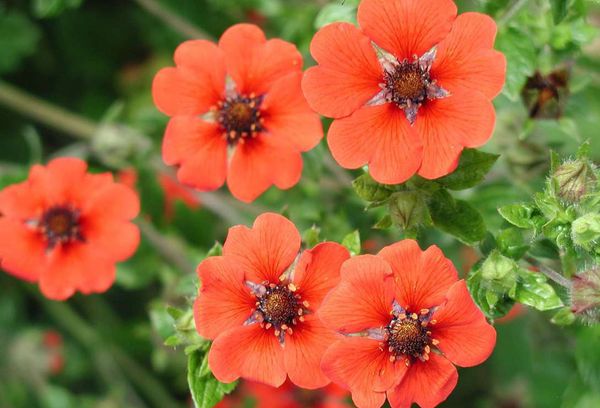

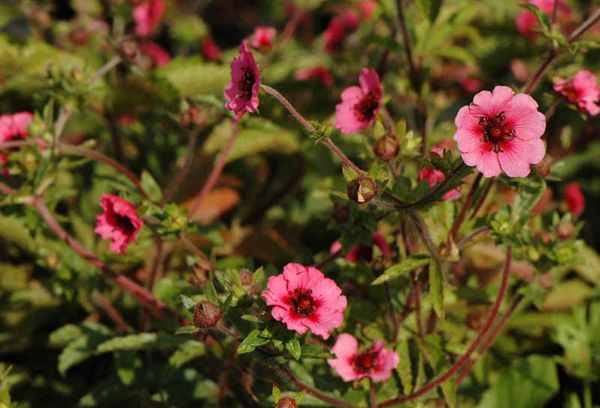
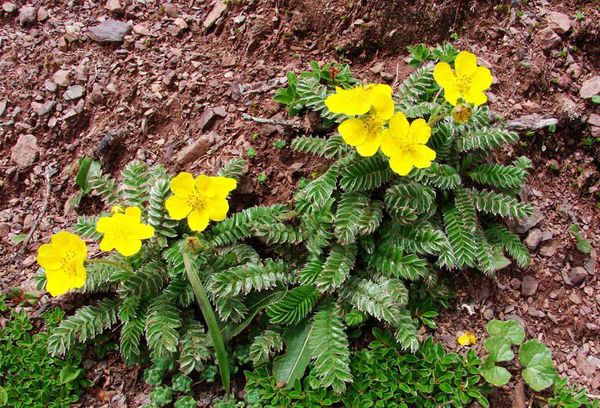
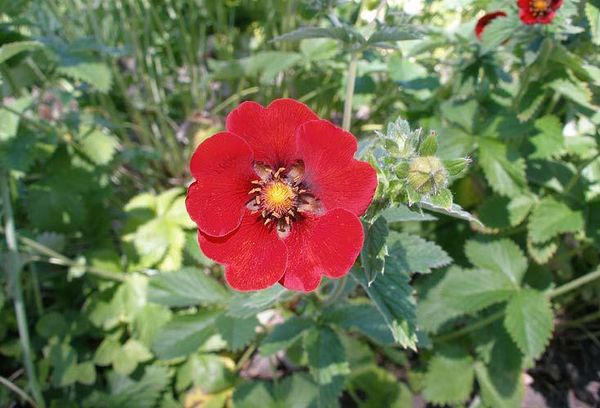
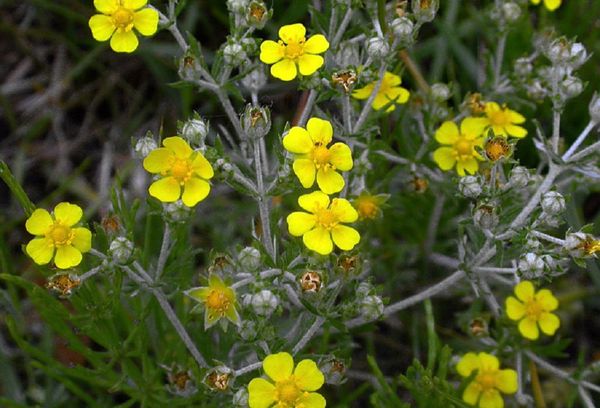
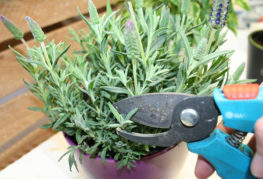

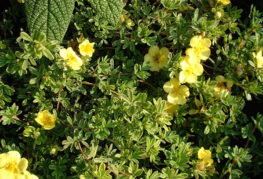
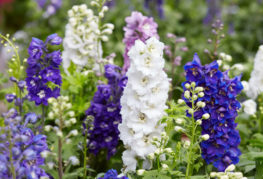
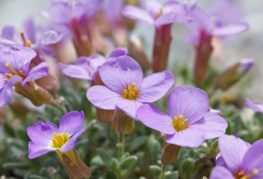
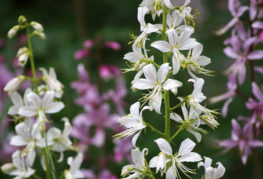
and will be published shortly.